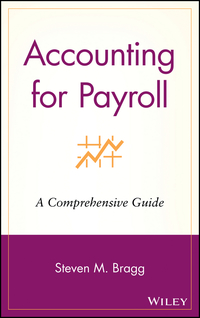


3: Financial Statements and Ratio Analysis Annual Balance Sheets (Values in Millions) December 31, 2019 December 31, 2018 Cash $ 9,090 $ 6,547 Receivables 21,163 19,549 Inventories 8,068 7,904 Other current assets 1,831 1,681 Property, plant, and equipment, gross 204,960 187,519 Accumulated depreciation and 110,020 97,917 depletion Other noncurrent assets 19,413 17,891 Accounts payable 13,792 22,862 Short-term debt payable 4,093 3,703 Other current liabilities 15,290 3,549 Long-term debt payable 6,655 7,099 Deferred income taxes 16,484 16,359 Other noncurrent liabilities 21,733 16,441 Retained earnings 76,458 73,161 Total common shares outstanding 6.7 billion 6.8 billion 3: Financial Statements and Ratio Analysis Annual Income Statements (Values in Millions) For the year ended December 31, 2019 December 31, 2018 Sales $178,909 $187,510 Cost of goods sold 109,701 111,631 Selling, general, and administrative expenses 12,356 12,900 Other tax expense 33,572 33,377 Depreciation and amortization 12,103 7,944 Other income (add to EBIT to arrive at EBT) 3,147 3,323 Interest expense 398 293 Income tax rate 21% 21% Dividends paid per share $1.15 $0.91 Basic EPS from total operations $1.64 $2.87 b. Create a spreadsheet similar to Table 3.20 to model the following: 1. A detailed, comparative balance sheet for Dayton Inc. for the years ended December 31, 2019 and 2018. 2. A common-size balance sheet for Dayton Inc. covering the years 2019 and 2018. c. Create a spreadsheet similar to Table 3.100 to perform the following analysis: 1. Create a table that reflects both 2019 and 2018 operating ratios for Dayton Inc., segmented into (a) liquidity, (b) activity, (c) debt, (d) profitability, and (e) market. Assume that the current market price for the stock is $90. 2. Compare the 2019 ratios to the 2018 ratios. Indicate whether the results "outperformed the prior year" or "underperformed relative to the prior year. 3: Financial Statements and Ratio Analysis Annual Balance Sheets (Values in Millions) December 31, 2019 December 31, 2018 Cash $ 9,090 $ 6,547 Receivables 21,163 19,549 Inventories 8,068 7,904 Other current assets 1,831 1,681 Property, plant, and equipment, gross 204,960 187,519 Accumulated depreciation and 110,020 97,917 depletion Other noncurrent assets 19,413 17,891 Accounts payable 13,792 22,862 Short-term debt payable 4,093 3,703 Other current liabilities 15,290 3,549 Long-term debt payable 6,655 7,099 Deferred income taxes 16,484 16,359 Other noncurrent liabilities 21,733 16,441 Retained earnings 76,458 73,161 Total common shares outstanding 6.7 billion 6.8 billion 3: Financial Statements and Ratio Analysis Annual Income Statements (Values in Millions) For the year ended December 31, 2019 December 31, 2018 Sales $178,909 $187,510 Cost of goods sold 109,701 111,631 Selling, general, and administrative expenses 12,356 12,900 Other tax expense 33,572 33,377 Depreciation and amortization 12,103 7,944 Other income (add to EBIT to arrive at EBT) 3,147 3,323 Interest expense 398 293 Income tax rate 21% 21% Dividends paid per share $1.15 $0.91 Basic EPS from total operations $1.64 $2.87 b. Create a spreadsheet similar to Table 3.20 to model the following: 1. A detailed, comparative balance sheet for Dayton Inc. for the years ended December 31, 2019 and 2018. 2. A common-size balance sheet for Dayton Inc. covering the years 2019 and 2018. c. Create a spreadsheet similar to Table 3.100 to perform the following analysis: 1. Create a table that reflects both 2019 and 2018 operating ratios for Dayton Inc., segmented into (a) liquidity, (b) activity, (c) debt, (d) profitability, and (e) market. Assume that the current market price for the stock is $90. 2. Compare the 2019 ratios to the 2018 ratios. Indicate whether the results "outperformed the prior year" or "underperformed relative to the prior year









